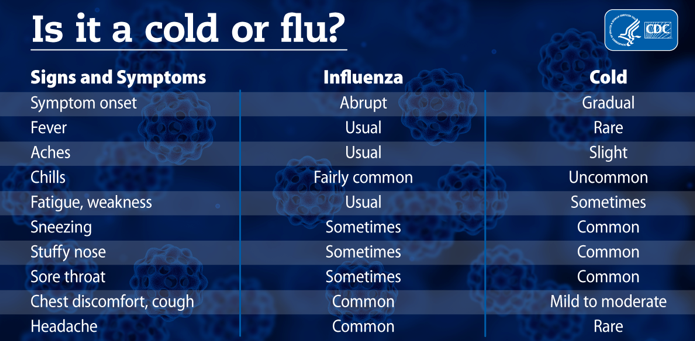Cold vs. flu
What is the difference between a cold and flu?
Flu and the common cold are both respiratory illnesses, but they are caused by different viruses. Because these two types of illnesses have similar symptoms, it can be difficult to tell the difference between them based on symptoms alone.
In general, flu is worse than the common cold, and symptoms are more common and intense. Colds are usually milder than flu. People with colds are more likely to have a runny or stuffy nose. Colds generally do not result in serious health problems, such as pneumonia, bacterial infections or hospitalizations. Flu can have very serious associated complications.
Here are some of the state guidelines to help guide you to decide whether to keep your student home or send them to school.
Fever: Students with a fever of 100 degrees F or above should stay home. They need to be fever-free for 24 hours without the use of fever-reducing medications before they can return to school.
Vomiting: Need to be free of vomiting for 24 hours before they return to school.
Diarrhea: Need to be free of diarrhea for 24 hours before they return to school.
Severe Cold and/or Cough: They should stay home.
Swelling, Redness, Tenderness or Discharge of the Eyes: They need to stay home. You may want the condition diagnosed by your physician.
Communicable Disease: They need to stay home.
Unexplained Skin Eruptions or Rash: Need to be diagnosed and treated by a physician. Dr. needs to clear student to return to school.
Unexplained Abdominal Pain: They should stay home.
Please note that any health condition that in the School Administrator’s judgment is of concern for the student’s or others health, the student may be sent home.



 Launch the media gallery 1 player
Launch the media gallery 1 player